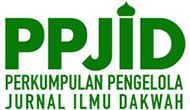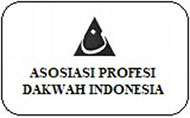Islam and Body Discipline: Remove Tattoos and Da'wah Paths of Hijrah Care Community
Abstract
This article examines the hijrah movement within the Hijrah Care Community through the medium of the Free Tattoo Removal Movement. The emergence of Hijrah Care and the Free Tattoo Removal Movement stems from the street culture da'wah and focuses on street children who want to undergo hijrah but still have tattoos on their bodies. Therefore, Hijrah Care endeavors to provide a path of repentance for street children by organizing the Free Tattoo Removal Program. Data were obtained through interviews and observations of Hijrah Care's social media accounts. This article demonstrates that the Free Tattoo Removal Movement serves as a means of da'wah for the Hijrah Care Community to construct an ideological discourse through religious studies, which participants of the tattoo removal must adhere to. There has been a fundamental change in perception and meaning regarding tattoos. Before hijrah, tattoos were seen as art and a representation of themselves and their group. However, post-hijrah, their perception and understanding of tattoos have changed drastically. Tattoos are no longer perceived as art but are now viewed with negative sentiment and even despised.
Keywords
Full Text:
PDFReferences
Arbi. (2021). Tujuan Mengikuti Program Hapus Tato Gratis.
Baban Gandapurnama. (2021, November 4). Kala Para Wanita Berhijab Hapus Tato Demi Hijrah. Retrieved May 30, 2023, from https://news.detik.com/berita-jawa-barat/d-4157907/kala-para-wanita-berhijab-hapus-tato-demi-hijrah
Birgit Meyer. (2013). Mediation and Immediacy: Sensational Forms, Semiotic Ideologies, and the Question of the Medium. https://doi.org/10.1002/9781118605936.ch17
Evolvi, G. (2017). Hybrid Muslim identities in digital space: The Italian blog Yalla. Social Compass, 64(2), 220–232. https://doi.org/10.1177/0037768617697911
Hasan, N. (2009). The making of public Islam: Piety, agency, and commodification on the landscape of the Indonesian public sphere. Contemporary Islam, 3(3), 229–250.
Heidi A. Campbell. (2012). Understanding the Relationship between Religion Online and Offline in a Networked Society. Journal of the American Academy of Religion, 64–93. Retrieved from https://academic.oup.com/jaar/article-abstract/80/1/64/1007151
Kailani, N. (2012). Forum Lingkar Pena and Muslim youth in contemporary Indonesia. 46, 33–53.
Kéri, S., & Sleiman, C. (2017). Religious Conversion to Christianity in Muslim Refugees in Europe. Archiv Für Religionspsychologie / Archive for the Psychology of Religion, 39(3), 283–294.
Kluver, R., & Cheong, P. H. (2007). Technological Modernization, the Internet, and Religion in Singapore. Journal of Computer-Mediated Communication, 12(3), 1122–1142. https://doi.org/10.1111/j.1083-6101.2007.00366.x
Kuntowijoyo; (2018). Muslim Tanpa Masjid: Mencari Metode Aplikasi NIlai-Nilai Al Qur’an Pada Masa Kini. IRCiSoD. (Yogyakarta). Retrieved from //opac.uinkhas.ac.id%2Findex.php%3Fp%3Dshow_detail%26id%3D26090
Lyansari, K. N. (2019). Hijrah Celebrity Creating New Religiosities, Branding Economics of Lifestyle in the Age of Muslim Mass Consumption. Analisis: Jurnal Studi Keislaman, 18(2), 211–232. https://doi.org/10.24042/ajsk.v18i2.3066
Nieuwkerk, K. V. (2018). Introduction Moving In and Out of Islam1. In K. Van Nieuwkerk (Ed.), Moving In and Out of Islam (pp. 1–26). University of Texas Press. https://doi.org/10.7560/317471-001
Nurmatari, A. (2015). Shift, Gerakan Dakwah Kreatif Pemuda di Bandung Rangkul Anak Punk. Retrieved May 30, 2023, from Detiknews website: https://news.detik.com/berita/d-2988687/shift-gerakan-dakwah-kreatif-pemuda-di-bandung-rangkul-anak-punk
Rifki. (2021, Mei). Program Hapus Tato pada Komunitas Hijrah Care.
Rifki Saiful (Director). (2021, April 24). Hijrah Care Hukum Menghapus Tato Haram? Mengupas Tuntas Hukum Menghapus Tato Secara Syariah. In Hijrah Care. Youtube.
Rokib, M., & Sodiq, S. (2017). Muslims with tattoos: The punk Muslim community in Indonesia. Al-Jami’ah: Journal of Islamic Studies, 55(1), 47–70.
The Bright Sight Show. (2021). Perjuangan Rifki Mengayomi Para Anak Muda Hijrah Bersama Hijrah Care‼️. Retrieved from https://www.youtube.com/watch?v=Togz9Ucdgt0
Trans7 Official. (2019). Proses Penghapusan Tato Dengan Laser | HITAM PUTIH (05/07/19) Part 3. Retrieved from https://www.youtube.com/watch?v=xISzZpVwQK0
Van Nieuwkerk, K. (2021). Introduction Moving In and Out of Islam1. In Moving in and Out of Islam (pp. 1–26). University of Texas Press.
Wohlrab, S., Stahl, J., & Kappeler, P. M. (2007). Modifying the body: Motivations for getting tattooed and pierced. Body Image, 4(1), 87–95. https://doi.org/10.1016/j.bodyim.2006.12.001
DOI: http://dx.doi.org/10.24014/jdr.v34i1.20904
Refbacks
- There are currently no refbacks.

This work is licensed under a Creative Commons Attribution-ShareAlike 4.0 International License.
Editorial Office:
2nd Floor, Building of Faculty of Da'wah and Communication, Universitas Islam Negeri Sultan Syarif Kasim Riau. Jl. HR Soebrantas Km 15, Simpangbaru, Tampan, Pekanbaru
Email : jurnalrisalah@uin-suska.ac.id

This work is licensed under a Creative Commons Attribution-ShareAlike 4.0 International License.














